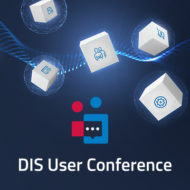Connecting devices together in a network to share resources and information is essential to operating an efficient dealership. But networks are complicated things, and can intimidate even tech-savvy people. In this article we cover the 5 main components of your network, and where things most often go wrong:
- LAN vs. WAN
- Connectivity
- Addressing
- Firewall
- Permissons
1. LAN vs. WAN
Your Local Area Network (LAN) consists of the devices connected in a single dealership location. A typical dealership LAN contains PCs, printers, switches, routers and one or more servers. A Wide Area Network (WAN) connects devices over a “wide” area, like between a main and a remote location.
2. CONNECTIVITY
Most devices in the network have an Ethernet connection, usually a Category 5 cable connected to some type of switch. The old twinaxial connections are mostly gone from the average dealership environment, while there is an increase in devices connecting wirelessly. Wireless connections have many benefits for a dealership. (See the past article Going Wireless for more on this.)
3. ADDRESSING
Each device on the network has a unique IP address. The only exception is when a device connects to the network through another device (some printers connect to the network through a print server or PC). These unique IP addresses are either set manually (static) or automatically (dynamic). Dynamically setting IPs is easier and more common, especially in a large network.
Dynamic IPs are assigned using Dynamic Host Configuration Protocol (DHCP). This allows a computer to be configured automatically, without any work from the network administrator. It also has a central database for keeping track of computers connected to the network. This prevents two devices from accidentally being configured with the same IP address. In a typical dealership, the router or firewall is the device running DHCP and assigning IPs – in many cases, that device is a SonicWALL.
Static IPs (manually configured by a network administrator) are required by certain devices that need their address to always be the same – network printers, routers and PCs that serve a specific function like acting as a gateway device for an online or electronic parts catalog.
4. FIREWALL
A firewall allows or blocks network transmissions based upon a set of guidelines, configured to fit your dealership’s environment. It protects a network from unauthorized access while allowing legitimate communications to pass. In a typical dealership network, the SonicWALL acts as the hardware firewall. The advantage of using a hardware firewall is that it protects between the local network (LAN) and the outside world (WAN) where most threats are coming from.
There are also software-based personal firewalls, like Windows firewall. Some antivirus software, suites like Norton’s 360, also includes a personal firewall feature. These usually run locally on your PC. The advantage is each PC is individually protected. The main disadvantage is personal firewalls sometimes block or prevent legitimate traffic across the network.
DIS Support generally recommends disabling personal PC firewalls if they are blocking legitimate traffic – like stopping you from emailing an invoice or blocking pictures in units. If you choose to use personal firewalls at the PC level, you may need to configure/manage the firewall to allow DIS related traffic.
5. PERMISSIONS
One of the main benefits of a network is the sharing of information and resources – like printers or parts catalog files. However, there is an art to providing access to those that need it and preventing access by those that don’t.
Within a typical dealership, lack of permission to access, read or write to a directory or file can create issues. For example, some applications require full access to files within the IBM (client access) and DIS folders on PCs and the IFS directory on the server (business system). Without these permissions, Keystone may not update or you may have issues uploading pictures in units.
Permissions issues can be caused by software-based firewalls and the more robust levels of security found in Windows 7 and Windows 8. Managed networks – domains, can also create issues if the DIS and IBM folders do not have full access and permissions granted. The DIS support team can help sort out permission issues if they occur.
![Fixed Absorption: Your Dealership’s Recession Shield [Infographic]](https://www.discorp.com/wp-content/uploads/2025/04/Blog-prev-190x190.jpg)


